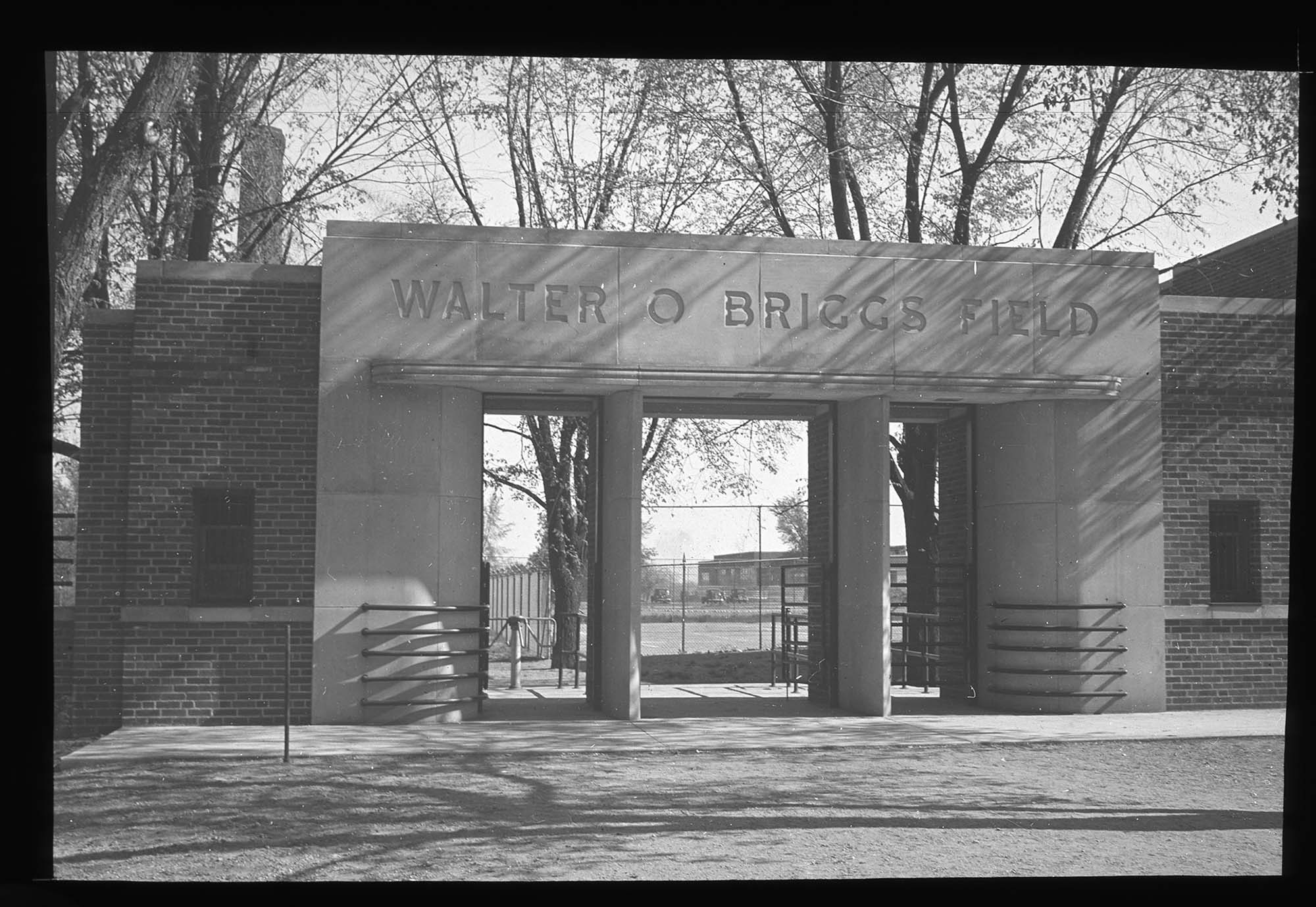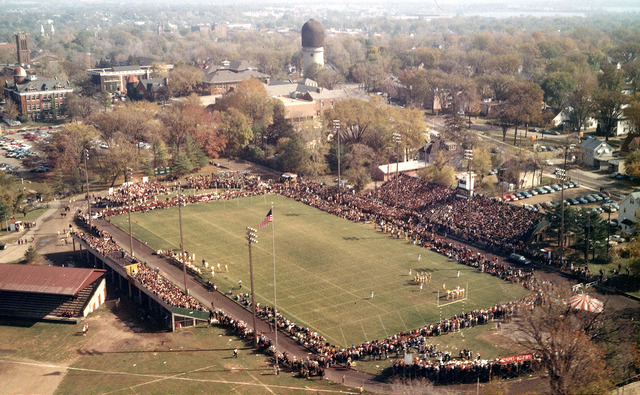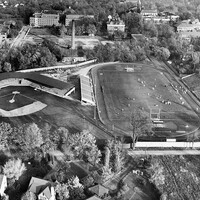-
Building Name
-
Walter O. Briggs Field
-
Description
-
Work on the Walter O. Briggs Field began almost immediately after $150,000 was donated by Walter O. Briggs, a native of Ypsilanti and owner of the Detroit Tigers. Workmen revamped the ball diamond, erected two new grandstands, and added modern football bleachers to replace wooden stands on Alumni Field. Two wings were constructed which included on the west wing, lockers, showers, property rooms, and offices. Quarters are provided for men for both home and visiting teams, the accommodations were the same for both. The east wing contained a 50 x 110 foot practice room with a dirt floor. The roof was high enough for pole vaulters to not become tangled in the girders. Indoor practice would take place primarily in the winter months for track and field events. The entrance gates faced Forest Avenue, and also included ticket-selling windows and turnstiles. Also featured was a 3,000 person baseball grandstand which was covered to protect spectators from rain and overhead sun rays. The stands faced directly west. The revamping of the baseball diamond resulted in the construction of a ball park with home plate 370 feet from the left field fence at the foul line. Right and center field fences were about 300 feet from home plate. Construction was directed by the Barton-Marlow Company under the supervision of Walter O. Briggs. The improvements were fully funded by Mr. Briggs, whose gift of $150,000 was announced by his son Walter O. Briggs, Jr. at the Michigan Centennial Dinner which was held at McKenny Hall, January 8, 1937. Approximately, 3,000 people attended the baseball game dedication of Briggs Field on May 6, 1938, when Michigan State Normal College played the University of Michigan. The Huron's played their final season at Briggs Field in 1968, as Rynearson Stadium was completed the next year. The football and baseball fields were razed in 1972 to make space for new campus buildings.
-
Namesake Biography
-
Walter Owen Briggs, Sr. (February 27, 1877-January 17, 1952) was an American entrepreneur and professional sports owner. He was part-owner of the Detroit Tigers in Major League Baseball from 1919 to 1935, and then sole owner from 1935 to his death in 1952. Briggs also helped found the Detroit Zoo in 1928, and personally paid for many of its first exhibits. He was also a patron of Eastern Michigan University and the Detroit Symphony Orchestra. Briggs was born in Ypsilanti, Michigan and grew up a Detroit Tigers fan. In his early youth he worked at the Michigan Central Railroad and later opened Briggs Manufacturing Company in 1908, which specialized in the manufacturing of automobile bodies for the auto industry and later diversified into plumbing fixtures. After the death of Tigers' part-owner Bill Yawkey in 1919, surviving partner Frank Navin arranged for Briggs to buy a 25 percent stake in the club. He later bought enough stock to become a full partner with Navin, though he stayed in the background while Navin was alive. After Navin died in 1935, Briggs became the sole owner of the franchise. Briggs died at age 74 in Miami Beach, Florida; in 1952. His son, Walter Briggs, Jr., briefly inherited the Tigers before being forced to sell them in 1956.
-
Building Namesake
-
Walter O. Briggs, Owner of the Detroit Tigers
-
Year Constructed
-
1937
-
Date Dedicated
-
6 May 1938
-
Building Functions
-
Athletic Stadium
-
Date Demolished
-
1972
-
Architect
-
R.S. Gerganoff, Ypsilanti, MI
-
Builder
-
Barton-Marlow Company, Detroit, MI
-
Original Cost
-
$150,000
-
Architectural Style
-
Art Moderne
-
Rights
-
This Item is protected by copyright and/or related rights. You are free to use this Item in any way that is permitted by the copyright and related rights legislation that applies to your use. In addition, no permission is required from the rights-holder(s) for educational uses. For other uses, you need to obtain permission from the owner, Eastern Michigan University Archives (lib_archives@emich.edu).






